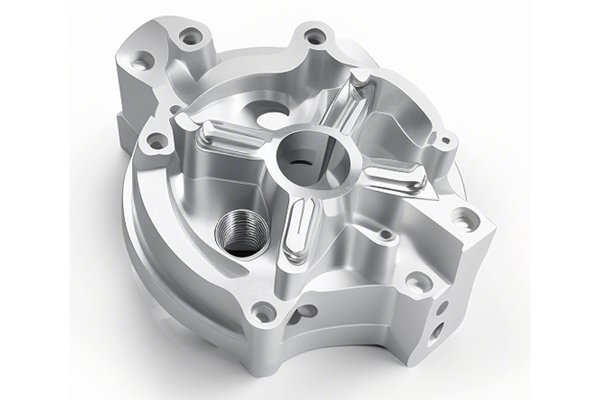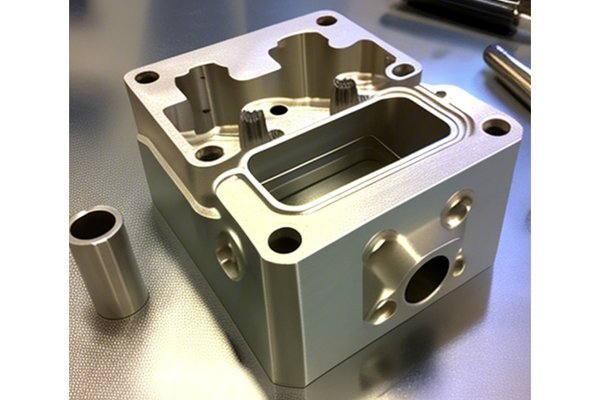Opening:
Did you know that even the slightest deformation in a machined part can lead to a significant reduction in its overall performance? In the world of CNC (Computer Numerical Control) machining, where precision is paramount, the effects of shrinkage and deformation can be the difference between a successful prototype and a costly failure. Understanding how these factors impact part accuracy is critical for engineers, manufacturers, and anyone involved in the precision machining industry.
When you’re relying on CNC machining to produce components for critical applications such as aerospace, automotive, or medical devices, there’s little room for error. This blog delves deep into the nuances of shrinkage and deformation during the CNC process, providing insights, solutions, and best practices to uphold part accuracy.
Content:
Understanding CNC Machining
Before we dive into how shrinkage and deformation can affect part accuracy, it’s essential to grasp what CNC machining entails. This process involves the use of computer-controlled machines to create parts from various materials with high accuracy and repeatability. CNC machining encompasses several machining processes, including milling, turning, drilling, and grinding, and can handle a wide range of materials, including metals, plastics, and composites.
What Causes Shrinkage and Deformation?
Different materials exhibit unique thermal and physical properties. Metals like aluminum, steel, and titanium behave differently under machining conditions, and non-metals such as plastics and composites may have their own shrinkage characteristics. For instance, metals generally experience thermal expansion, which can lead to deformation when they cool and contract.
The choice of tools, cutting speeds, feed rates, and machining depths can all influence how a part behaves during the machining process. For example, excessive cutting speeds can lead to high temperatures and thermal deformation of the material.
One of the most critical stages in CNC machining occurs after the actual cutting. If a part cools too quickly or unevenly, internal stresses can lead to warping or shrinkage.
Humidity and temperature fluctuations in the machining environment can also affect the material properties and the resultant accuracy of the machined parts.
The Impacts of Shrinkage and Deformation on Part Accuracy
When parts experience shrinkage or deformation during CNC machining, the results can be detrimental:
Engineers often specify tight tolerances, especially for complex components. Any shrinkage or deformation can shift these dimensions beyond acceptable limits, leading to parts that do not fit or function as intended.
Shrinkage and deformation can contribute to an inferior surface finish, leading to increased friction, more significant wear, and reduced performance in the finished product.
In high-stakes applications, the functionality of the part can be compromised if its shape and integrity are not maintained during the machining process.

Solutions to Mitigate Shrinkage and Deformation
Choosing the right material is crucial in minimizing the effects of shrinkage and deformation. For example, opt for materials with lower thermal expansion coefficients. Also, consider pre-heat treatment of materials to relieve internal stresses before machining.
Adjust your machining parameters to optimize cutting speeds, feed rates, and depths. Implement risk-based assessments on tooling based on material properties and the desired outcome.
Utilizing controlled cooling methods, such as gradual temperature reduction or employing coolants, can help mitigate sudden thermal shocks that lead to deformation.
Investing in advanced CNC simulation software can help visualize how parts will react during machining. This technology can predict potential issues related to shrinkage or deformation before actual machining begins.
Implementing real-time monitoring systems can provide valuable data that enables quick adjustments during machining. This can include temperature monitoring, vibration analysis, and dimensional checks throughout production.
Consider incorporating post-processing techniques that can help restore dimensional integrity. Techniques such as annealing can alleviate internal stresses, thus improving accuracy.
Case Studies
Case Study 1: Aerospace Component
A leading aerospace company faced issues with accuracy in the production of a flight-critical component made from aluminum. After analyzing their process, they discovered excessive thermal deformation due to high cutting speeds. By switching to lower speeds and using advanced cooling techniques, they improved the overall accuracy and reduced scrap rates by 40%.
Case Study 2: Medical Device Manufacturer
A medical device manufacturer was struggling with part shrinkage that resulted in non-functional components. By implementing real-time monitoring and material pre-treatment, they enhanced their process consistency, resulting in a 30% increase in quality control metrics.
Ending:
In the fast-paced and precision-focused world of CNC machining, understanding the impacts of shrinkage and deformation on part accuracy is essential. By carefully selecting materials, optimizing tooling parameters, controlling cooling processes, and continually monitoring production, manufacturers can avoid detrimental impacts on accuracy and ensure their parts meet stringent quality standards.
As we’ve explored in this blog, the relationship between shrinkage, deformation, and part accuracy is intricate and requires a comprehensive approach to address. By applying the techniques and strategies outlined in this guide, manufacturers can significantly enhance the robustness of their CNC machining processes.
In today’s highly competitive landscape, every fraction of a millimeter or a second saved can translate to substantial time and cost efficiencies. Reflect on the importance of these elements in your machining operations, as they could very well dictate your success in delivering high-quality products on time and within specifications. Knowledge is power—utilizing it in your machining processes will ensure that your parts don’t just meet requirements but exceed expectations.






